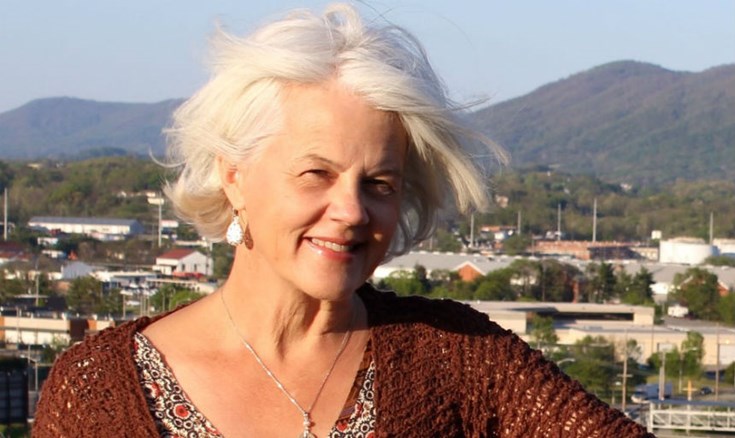Written by Aeryn McMurtry and Zoe Manoukian
Beth Macy, author of New York Times bestseller “Dopesick: Dealers, Doctors, and the Drug Company that Addicted America,” visited RC on Feb. 6 to give a lecture about her book and the opioid crisis affecting southwest Virginia. “Dopesick” follows the lives of families affected by the crisis and investigates Purdue Pharma, the company largely responsible for fueling the proliferation of opioid addiction by aggressively promoting their prescription opiates.
According to the research in “Dopesick,” 72,000 people died to drug overdose deaths last year and approximately 60,000 of those were opioid related. It began in “politically unimportant” and distressed rural areas such as Appalachia and coastal Maine that were losing jobs and were susceptible to manipulation by pharmaceutical companies. Macy talked at length about the marketing and financial bonuses that doctors were given by Purdue Pharma as rewards for prescribing OxyContin.
“5,000 doctors and nurses and pharmacists took free trips to resorts to learn how to become paid speakers for Purdue Pharma. This was really widespread, not just for opioids in Purdue and OxyContin, but a lot of sales reps of all pharmaceuticals were arriving at physicians’ workplaces with free lunches [and other gifts]… and all in exchange for them doing a little pitch for their drug,” said Macy.
Perhaps the most urgent factor motivating Macy’s public advocacy regarding the opioid crisis is the substantial amount of misconceptions and mistruths that are present in the way people are understanding and reacting to the crisis.
“It was happening all around and it didn’t seem like people understood how we got here and everyone, every race, every social class, every gender is at risk, and so I wanted to tell a story that was important,” said Macy.
Though she identifies distressed rural parts of the United States as having been impacted from the start, Macy also asserts that wealthy neighborhoods are affected by the epidemic. She found that in Hidden Valley, an upper middle class suburb of Roanoke, young people who had become addicted to opioids were resorting to tactics such as asking their parents for money to use for a new laptop that was instead spent on drugs, or securing jobs moving furniture for the elderly in order to get access to and steal opioids from their home.
According to Dr. Shannon Anderson, associate professor of sociology and coordinator of public health studies, “A final true misconception is that opioid use happens to people different from ‘us.’”
Macy’s book focuses on a wide range of affected people in an effort to fix this misconception, and she acknowledges the challenges of this task.
“The opioid epidemic is festering and growing. It does so by taking advantage of long standing fissures in American society: the fundamental difference between law enforcement and medicine, between punishing the addicted or getting them treatment for their substance use disorder,” said Macy.
The fact is that an opioid addiction can happen to any and all of us, and addiction is a slippery slope.
“The main thing is that a lot of people start out and are like ‘well it’s pills, it’s prescribed by a physician, it’s safe.’ And even if not prescribed to them, they still think ‘I’m not going to die if I take one of these OxyContin.’ The thing is, that pill could lead you then to an addiction. None of these people I interviewed [that were] addicted to heroin planned to become a heroin addict. It can happen to any of us,” said Macy.
The most poignant section of Macy’s talk was her focus on Medication Assisted Treatment or MAT, and how the stigma around it is hurting more people than it’s helping.
“The criticism that I saw many people in my book hear when they would deign to be taking medication prescribed by their doctors,” said Macy, “was ‘you’re not really clean, you’re just substituting one medication for another.’”
The data overwhelmingly suggests that MAT is the most effective method for treating opioid addiction.
“To me, the science is really clear, and the National Institute on Drug Abuse, the CDC, and the World Health Organization all agree that the best kind of treatment for opioid use disorder is medication assisted treatment, which is Buprenorphine or Methadone. You are 50-60 percent likely to recover on Buprenorphine or Methadone as opposed to abstinence only, which works in about 8 percent of cases. The numbers are clear,” said Macy.
In the last 15 years 300,000 people died to drug overdose deaths, and many more will be lost in the next five. Only 10 percent of the addicted population get any special treatment at all. Over 50 percent of treatment facilities don’t offer MAT. Only 3 percent of facilities in America offer all three kinds of MAT. This is due to the stigma and belief in abstinence-only treatments.
“It takes the average person with opioid use disorder eight years and four to five treatment attempts to get just one year of sobriety. And in the age of fentanyl, most people don’t have eight years,” said Macy.
Macy calls on doctors to mitigate the crisis.
“I sort of call them out… I just think they were culpable in getting us into this crisis and should be a little more willing to step forward to get us out if it. They take this oath ‘do no harm’. And whether they were the ones that were overprescribing or not, ‘do no harm’ is helping people who are suffering, right? And not abandoning patients because they’re ‘addicts.’ [Opioid addiction] is really complicated and there’s a lot of nuisance… Just reading about it and educating yourself [is the best thing that the average person can do in hopes of alleviating the crisis],” said Macy.




